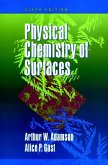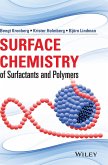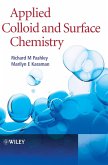Discover how an emerging field is leading to a new generation of enhanced semiconductors
Written by international leaders in the field, this book provides a complete and current review of the latest findings, practical applications, and active research in the organic functionalization of semiconductor surfaces. Readers will discover how the characteristics and properties of various organic functional groups when combined with inorganic semiconductor surfaces can lead to increasingly enhanced functional materials, including microchips and biosensors.
Functionalization of Semiconductor Surfaces addresses all the important research questions in the field, starting with the basics and then advancing to more complex functionalization chemistry. The text begins with an introduction to the field and a discussion of essential experimental methods. Next, it presents:
Detailed descriptions of the structures of the relevant semiconductor surfaces
Reviews of surface functionalization with progressively more complex organic functionalities
Discussion of organic and biomaterial functionalization of semiconductor surfaces, including a chapter examining theoretical studies of these systems
Both dry (vacuum) functionalization and wet chemical functionalization approaches
Clear illustrations of structures and mechanistic pathways enable readers to understand the underlying principles of organic functionalization of semiconductor surfaces and how these principles work in practice. Extensive bibliographies at the end of each chapter serve as a gateway to the field's growing body of literature.
This book is invaluable for chemists, engineers, and students who are involved in investigations of the surface chemistry of semiconductors and organic functionalization of semiconductor surfaces. Moreover, the book sets the foundation for the development of the next generation of microelectronic computing, micro- and optoelectronic devices, microelectromechanical machines, three-dimensional memory chips, silicon-based nano sensors, and nano-patterned biomaterials.
Written by international leaders in the field, this book provides a complete and current review of the latest findings, practical applications, and active research in the organic functionalization of semiconductor surfaces. Readers will discover how the characteristics and properties of various organic functional groups when combined with inorganic semiconductor surfaces can lead to increasingly enhanced functional materials, including microchips and biosensors.
Functionalization of Semiconductor Surfaces addresses all the important research questions in the field, starting with the basics and then advancing to more complex functionalization chemistry. The text begins with an introduction to the field and a discussion of essential experimental methods. Next, it presents:
Detailed descriptions of the structures of the relevant semiconductor surfaces
Reviews of surface functionalization with progressively more complex organic functionalities
Discussion of organic and biomaterial functionalization of semiconductor surfaces, including a chapter examining theoretical studies of these systems
Both dry (vacuum) functionalization and wet chemical functionalization approaches
Clear illustrations of structures and mechanistic pathways enable readers to understand the underlying principles of organic functionalization of semiconductor surfaces and how these principles work in practice. Extensive bibliographies at the end of each chapter serve as a gateway to the field's growing body of literature.
This book is invaluable for chemists, engineers, and students who are involved in investigations of the surface chemistry of semiconductors and organic functionalization of semiconductor surfaces. Moreover, the book sets the foundation for the development of the next generation of microelectronic computing, micro- and optoelectronic devices, microelectromechanical machines, three-dimensional memory chips, silicon-based nano sensors, and nano-patterned biomaterials.








